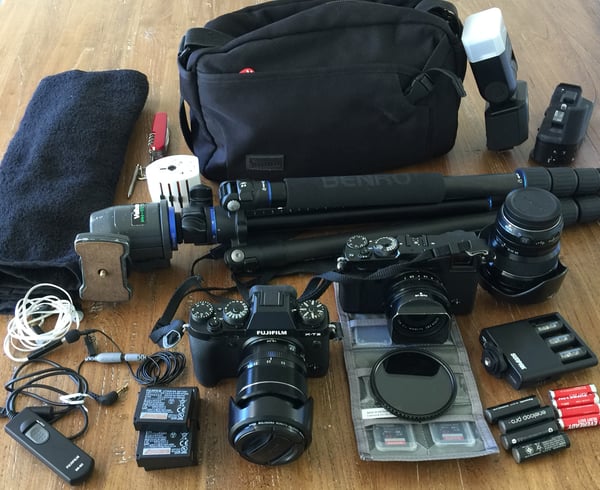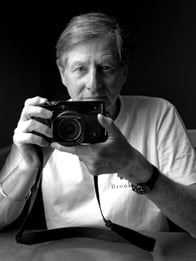
I was recently on the road for two months, flitting from country to country. Sounds good doesn’t it! But I was working; this was no holiday.
Travelling on a trip like this takes a lot of preparation, organization and research. Not only do you have to think about where you are going to stay but also how to travel to places that are some distance from the cities. Often there are language and cultural challenges that also have to be taken into consideration. Sometimes, of course, cross-cultural moments can be interesting, even a little curious. In our Turkish village the afternoon call to prayer from the local mosque seemed to coincide with the playing of a Verdi opera by our hotel proprietor. Oh well, it is said that Turkey is the crossroads between Europe and Asia after all.
Of course, from a photographer’s perspective there is the issue of how much and what equipment you should you travel with. As a young man I assisted a National Geographic photographer who travelled with a suitcase full of film. This caused no end of issues when going through customs and x-ray machines. I have also had problems in the past with custom officers who when confronted with my boxes and bags of equipment, demanded a briefcase full of money as a “deposit”, but with no receipt.
No longer am I travelling with suitcases full of film. That approach, along with its issues, has been replaced with all the paraphernalia that feeds the digital capturing world. I take a laptop so I can download the images and video footage every night. The images are then transferred across to two spare hard drives. Nothing is deleted from the memory cards until the images/videos are in at least two places.
I pack three Fujifilm X camera bodies and four Fujifilm lenses: 18mm, 18-55mm, 10-24mm, 40-150mm. My preference has always been fixed focal length lenses especially when I’m walking the streets. In the villages I find that working with 18mm on a Fujifilm X-Pro2 is a lot less confronting then a big zoom lens on a larger camera body. Besides I prefer to move my feet rather than carry a bigger lens. I have to confess though that my favourite two pictures from the assignment in Turkey were taken with zoom lenses on the Fujifilm X-T2 camera.
I also pack microphones, recorder, spaghetti-like rolls of leads and cords as well as a small tripod, because I now shoot video while travelling. Also shoved in amongst my socks are two Sunpak VL_LED-09 Compact Video Lights. They’re just strong enough to kick a small amount of light into the dark corners of a room without overpowering the natural light. Because they’re only slightly bigger than a cigarette pack, they don’t take up much space in my case.
So, what sort of equipment should a photography enthusiast take to capture memorable images from their travels? The question to ask yourself is, what sort of pictures do you want to take? Landscape, people, architecture or all three. Shooting landscape or architecture you might want to take a wider lens. If your interest is only in photographing people, perhaps you need a medium to slightly longer lens.
However, if your interests vary and you would like to photograph a variety of situations I would suggest using a wide to medium size zoom lens. This type of zoom will help you cover most events and people pictures. If you feel uncomfortable about getting too close, perhaps you can add another zoom lens. This lens could be sized from medium to slightly longer and give you the ability to stand back while you take pictures.
There is, however, one thing to remember about the equipment you choose to use on your journeys. Cameras don’t take pictures people do. So, remember to test and know your camera equipment before you travel.

Dr Michael Coyne Lecturer and Mentor at PSC, has worked as a photojournalist for over 35 years, covering significant events in places as diverse as China, Papua New Guinea, Cambodia, Indonesia, the Middle East and Africa. His work has been featured in magazines such as: Time, Life, Newsweek, and National Geographic. Michael's extensive work has been featured in a number of solo exhibitions around the world. He has had many successful books published about his work. Three documentaries films and a stage play have been produced about his life and work.
Discover a career in Photojournalism and Documentary Photography with a Bachelor Of Photography Degree at PSC. Applications are now open Mid-Year intake starting 16 July 2018.
